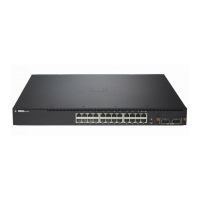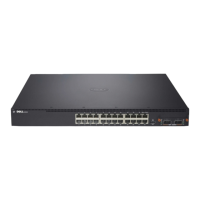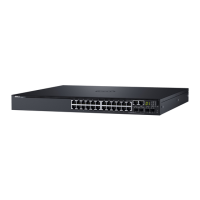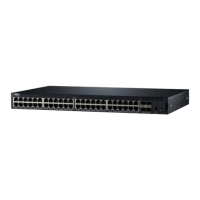72 System Firmware Version 5.1.0.1
Data Center – 4.2.0.4
Interoperability
Description User Impact
VLAN request/Notification counters are
not incremented for priority tagged
packets
Low – FIP sessions are established and are displayed in the show commands.
FIP snooping VLAN request or VLAN response counters do not increment when
CNA sends priority tagged frames (i.e. VID 0). It is observed that certain CNAs
sometimes sends FIP VLAN discovery frames as 802.1Q tagged frames with
VID=0 and priority as FCoE priority. FSB snoops FIP packets which are
classified to any of FCoE enabled VLANs. In this case, the default VLAN (1) and
the configured FCoE VLAN. In general, VLAN request messages are exchanged
as untagged so gets associated with VLAN 1. In this case, the BROADCOM CNA
sends priority tagged FIP frames (VID=0) which do not match the FSB snooping
criteria because they do not get associated to any of the FCoE enabled VLANs
hence FCoE VLAN R
equest/Notification counters are not incremented for priority
tagged packets. These control frames are however are forwarded to FCF by FSB
in order to establish a successful session. FIP snooping bridge need to consider
forwarding priority tagged FIP frames to FCF as well in order to interoperate with
CNAs which could send priority tagged packets. The current FSB implementation
does this already.
Broadcom CNA only supports
configuration of VLAN via VLAN
Discovery process
Low – Most users prefer automatic setup of CNAs
The Broadcom CNA does not support manual configuration of VLAN. This
means that customers who prefer to set up their FCoE network manually will not
be able to do so if using BRCM CNAs.
FIP snooping bridge does not forward
the DCBX FIP tlv info from
configuration source
Low – No supported FCF supports this configuration option.
While working with QLogic, it is found that CNA sends two TLVs concerning the
FIP/FCoE traffic. It sends FIP TLV along with FCoE TLV with respective
priorities - in this case same priority for both. Although, it is not a normal use case
but can be used to have different treatment for control and data traffic. There can
be a use case where host or FCF can choose to create different priorities for
control (FIP) and FCoE data traffic.
In cases, where FIP and FCoE use different priorities, it is expected that
intermediate switches are configured to treat them accordingly. In cases where
ports are configured in DCBX auto mode and configuration source carries two
TLVs, one for FIP and other for FCoE with different priorities then it is expected
that FSB/DCB should forward this information to downstream ports.
The PowerConnect FSB implementation ignores the FIP TLV and does not
forward this information to the peers. In such cases, Host will not know the
special treatment or expected priority for FIP frames. Considering that slow
protocol and this being a corner case situation, this can be a readme and
documented in release notes.
FIP Snooping Over Stack Results in
Low - When trying to accomplish FIP snooping over the stack, the eNode address
is put in the wrong VLAN causing the connections to never occur. FCoE is not
supported across the stacks so this is a non-issue.
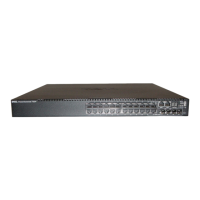
